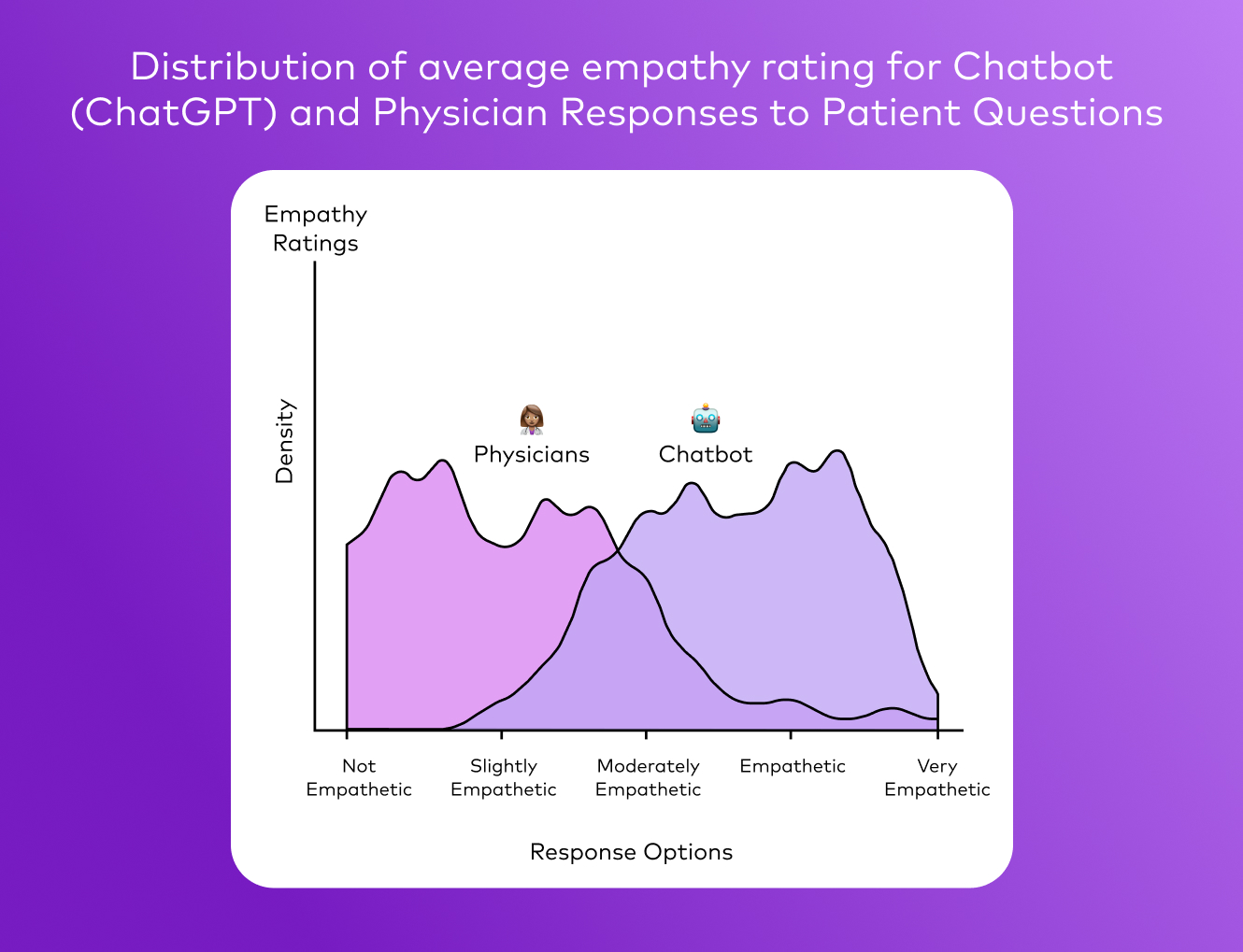AI and Personalization Can Close the Empathy Gap
The proliferation of AI has elevated customers’ digital expectations, though advancements in personalization are empowering brands to better listen, identify needs, and respond with empathy.
Summarize this articleHere’s what you need to know:
- ChatGPT recently passed the Turing test, creating an abundance of unique, conversational use cases, such as offering more empathic responses to patients than physicians and helping retail customers find what they want using everyday language.
- In turn, consumers are becoming more sophisticated in their use of AI, expecting deeper, emotionally relevant digital experiences from every brand they interact with.
- Personalization technology has now made it possible to automatically identify the consumer’s state of mind and utilize this unique data to deliver empathic digital experiences that dynamically adjust as their behavior evolves.
- With acquisition costs continually on the rise, brands should place a premium on empathy as those who act now stand to gain the loyalty of consumers who share they want their needs and feelings understood.
Remember the Turing Test, which you may have learned about in science fiction books and movies? It typically consists of tasks that determine whether a machine performs like a human, such as ethical and behavioral games. For decades, it has been the gold standard for measuring a computer’s ability to match human intelligence and many have long thought computers would never be capable of passing it. Well, ChatGPT-4 just quietly did the “impossible” in early 2024.
The impact has already been impressive and far-reaching. Today, AI-powered responses are actually proving themselves to be better at displaying positive human traits like empathy than real humans. Now, we know how hard it can be to get a warm response from a busy physician as a patient—but they’re still human (obviously). However, a recent study published in JAMA Internal Medicine unearthed an exciting new discovery: ChatGPT gives longer, more informative and empathetic responses than physicians themselves.

Yes, you have that right: AI systems—not humans—have dramatically raised the bar for empathy in digital interactions. These tectonic shifts extend beyond the healthcare sector, and they’re beginning to transform our daily interactions with brands across the board. For example, customers can now interact with AI-powered assistants like Shopping Muse to more seamlessly find what they want using everyday language. It’s all thanks to multi-faceted machine learning models that not only learn over time but draw from NLP (natural language processing), image recognition, and personalized algorithms that use behavioral, contextual, and affinity data. The result? Each customer receives product recommendations and curated bundles that match even their most eccentric queries.

With advanced AI-driven experiences like these on the rise, customers are becoming increasingly sophisticated in their use, too, expecting more from brands with every interaction. This presents a major opportunity for those brands to deliver.
The premium and payoff on empathy with AI-fueled personalization
Emotion drives every decision a customer makes. Meeting demand, then, revolves around a brand’s ability to understand their customers’ state of mind and respond based on their current needs.
This process lies at the heart of empathy, empowering brands to forge deep emotional connections that last. And customers can attest to that: Forrester found, for instance, that 87% of those who believe a company understands their needs and feelings will remain brand loyal.
Personalization technology has finally made it possible to achieve the above. By drawing on behavioral data—like clicks, affinities, event sequences, recency, and more—brands can now automatically identify their customers’ emotional states and dynamically adjust their targeting as their behavior evolves from, say, a state of curiosity to that of interest—even within a single session.
The making of an empathic digital experience
To better communicate how to deliver empathy through personalization, let’s further break down what makes an experience “empathic.” As humans, we feel an experience is empathic when it meets three criteria:
- Attentive listening
- Needs identification
- Empathic response
In the world of personalization, it looks a bit like this:

1. Attentive listening
Imagine you visit an outdoor gear retailer’s website to pick out camping gear for a family trip. The personalization engine attentively “listens” to your behavior, collecting and calculating both explicit and implicit signals from you via digital interactions, like clicks and affinities. This technology is self-learning, meaning it can identify patterns based on event sequences in real time. For instance, it might pick up that you’re browsing the product page of a kid-size camp chair for the second time this week or that you’ve just added a portable cooler to your cart after reading three pages of reviews.
2. Needs identification
The engine identifies your needs and infers your state of mind by analyzing it against other combinations of site interactions. It then automatically creates and dynamically updates empathy-based customer segments, modeled after each brand’s own customers’ intricate behavior patterns. From your behavior, it might determine you’re in a state of focus and automatically segment you into a corresponding audience—on the verge of buying all the things that make for an exciting camping trip but seeking reassurance that a brand or product is the right fit.
3. Empathic response
Finally, the engine responds with empathy, surfacing content, recommendations, and features that those users in a focused state of mind have responded to well to ensure you get the best equipment for your trip to the Catskills.
This is all possible digitally with today’s personalization technology. Marketers can target customers based on each consumer’s unique state of mind and deliver AI-powered personalization experiences and recommendations as well as optimize future interactions based on how consumers in each state of mind usually respond across different experiences.
Is your digital customer experience future-proofed for empathy?
We’re at the brink of a future in which empathy is no longer paid lip service by brands but is the bedrock of digital customer experiences. Picture a world in which companies forge genuine, meaningful connections with customers on a global scale, making them feel welcome and understood across every interaction and channel. It’s not science fiction; today’s personalization, which leverages purpose-built AI, means we can make this a reality.
We’re already finding brands that adopt advanced AI capabilities report 30% higher average uplifts than those who don’t. And, by 2026, we predict that purpose-built personalization AI will drive 3X more revenue for brands that take the plunge. But to fully reap these benefits and meet mounting customer expectations, brands can’t just sit on their hands—they must embrace the power of AI in the bid to craft truly empathic experiences.

 How Deep Learning is Adding Predictive Personalization Prowess to User Affinity Profiling
How Deep Learning is Adding Predictive Personalization Prowess to User Affinity Profiling

